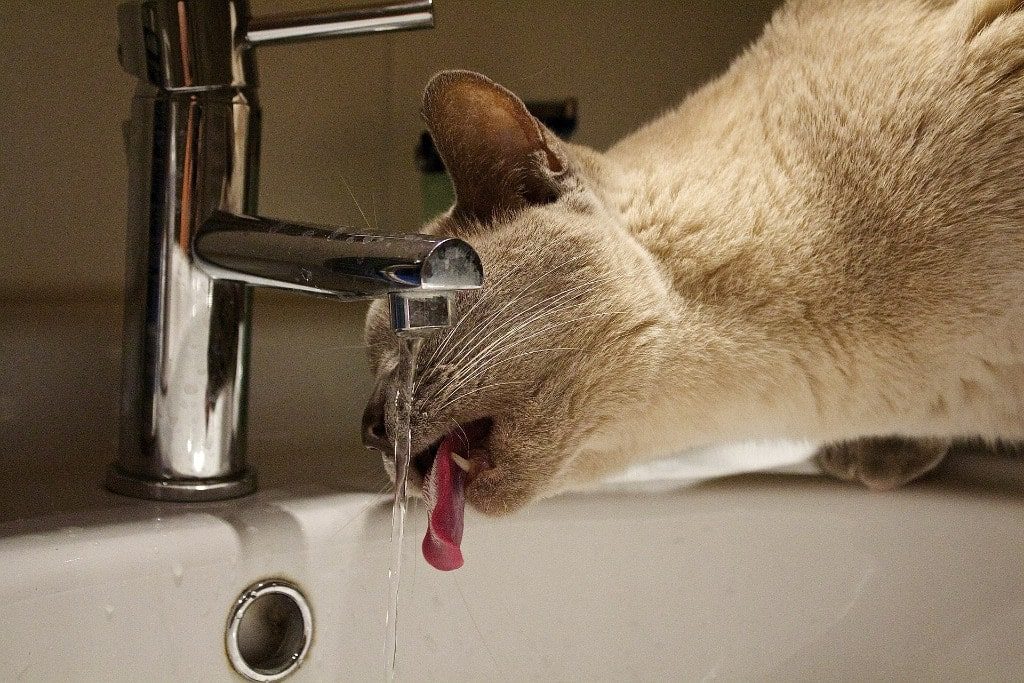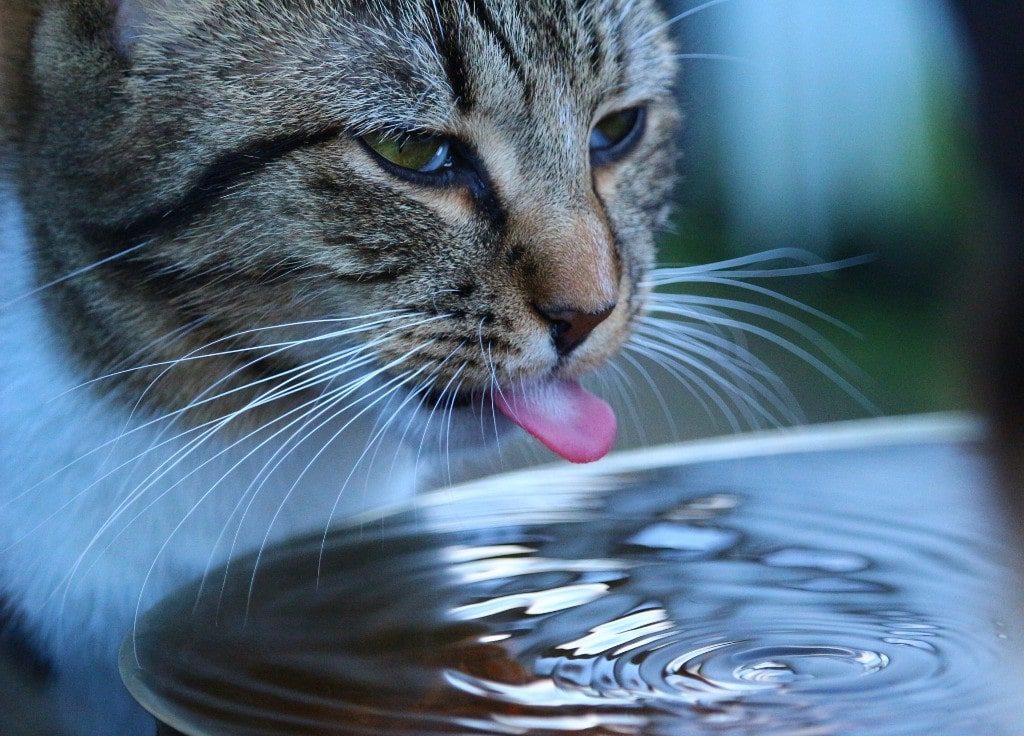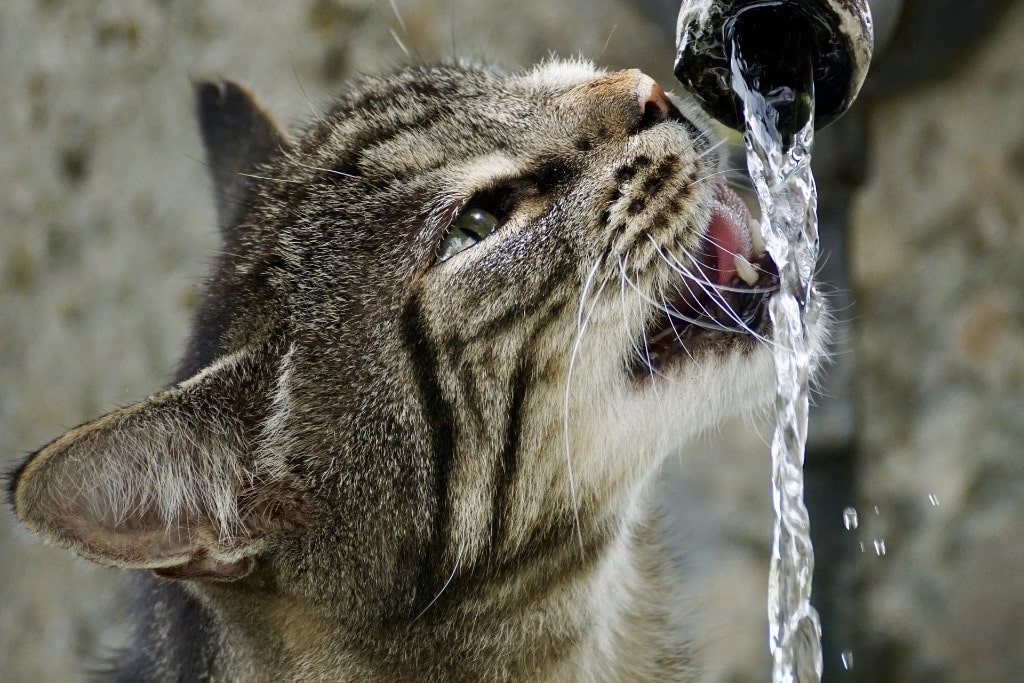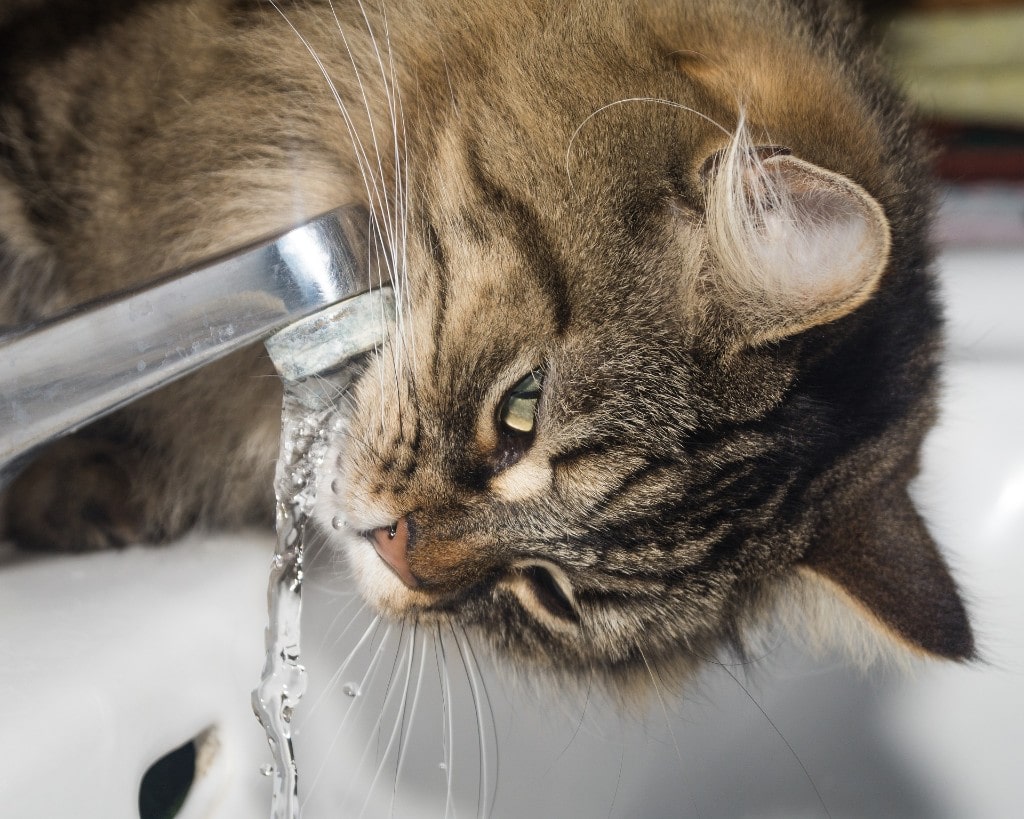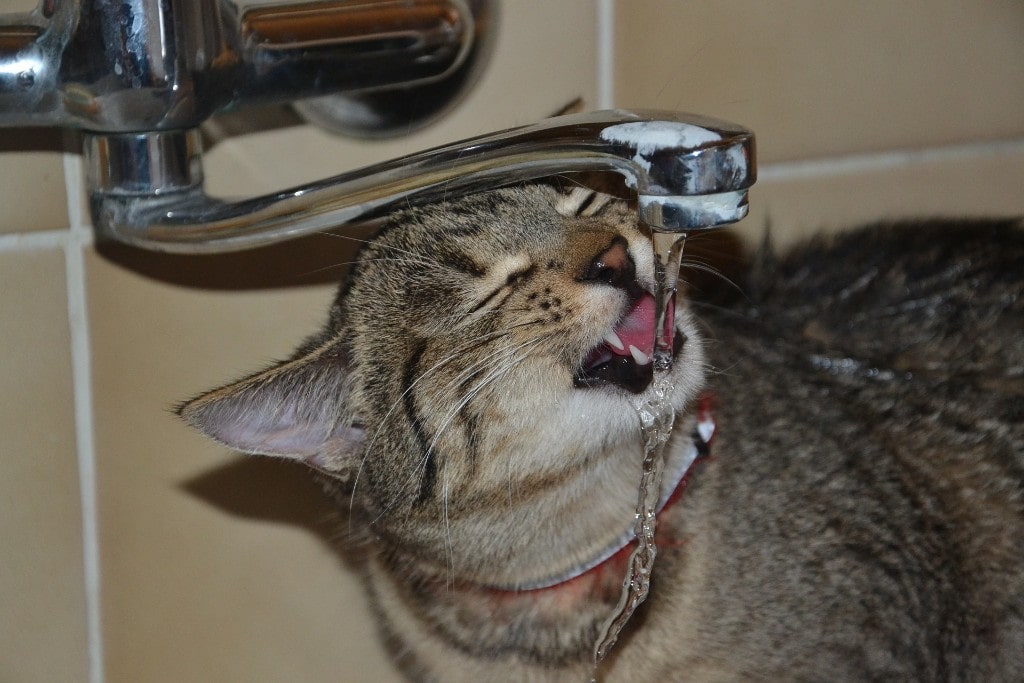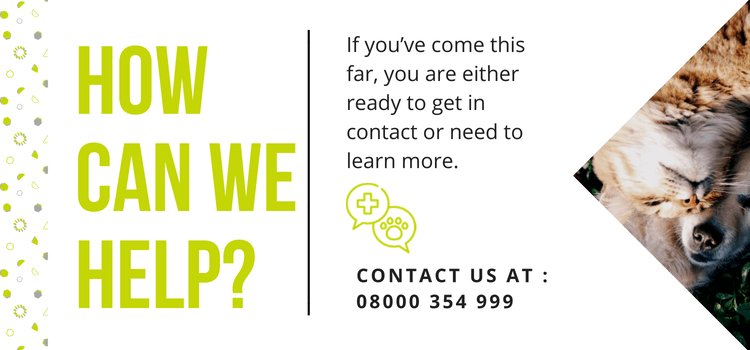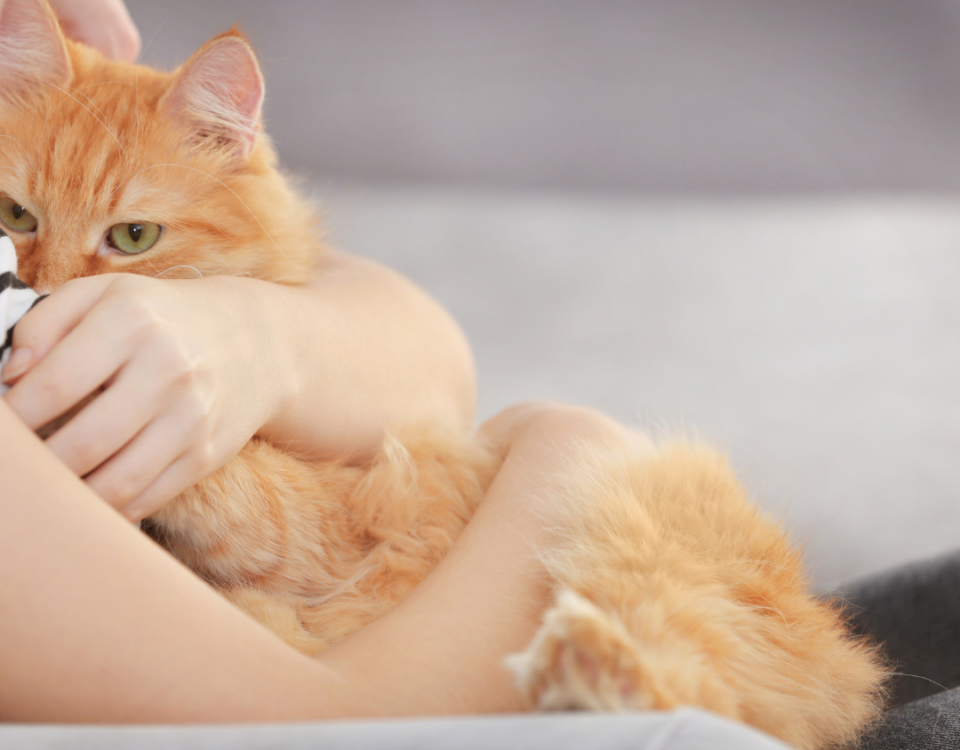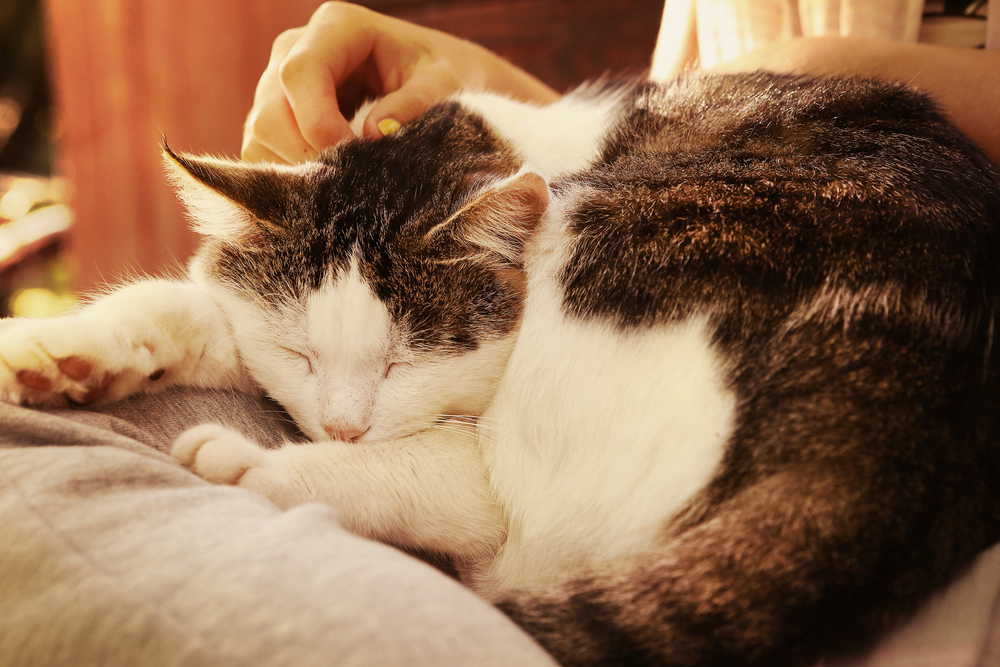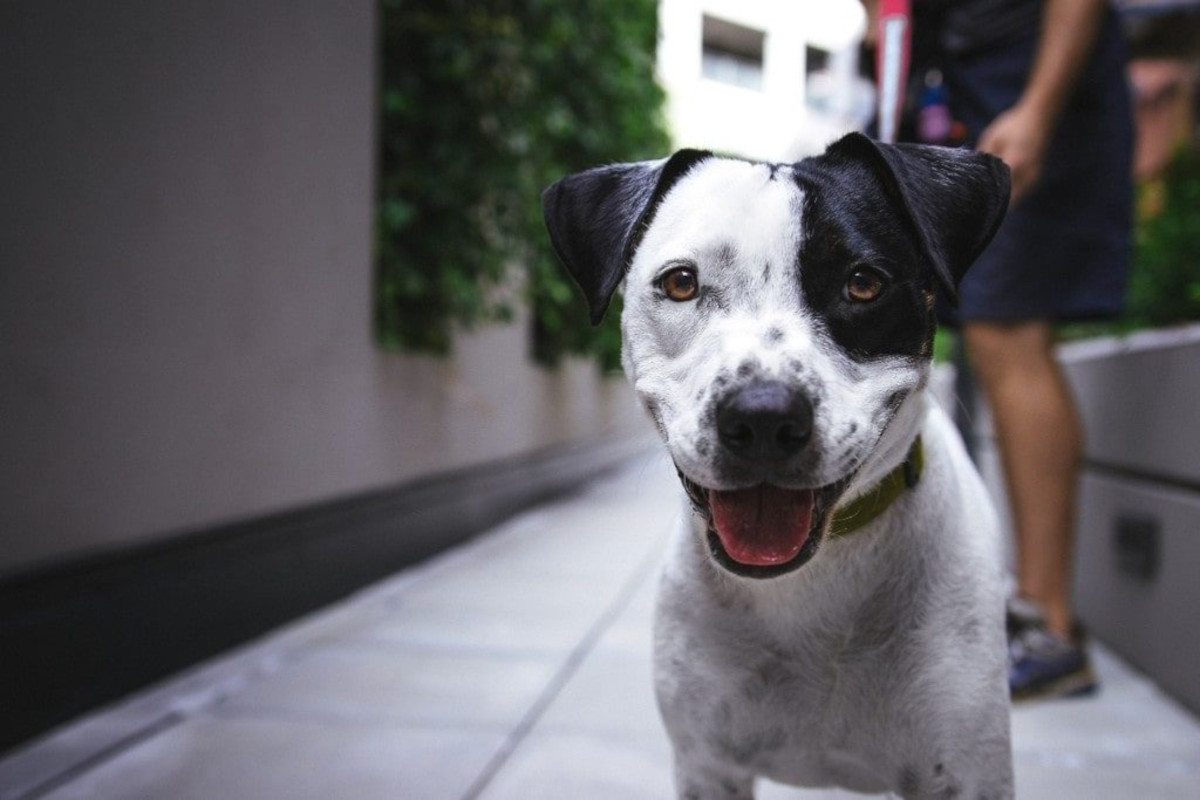
Why does my dog’s breath smell? Causes for bad breath in dogs
November 26, 2018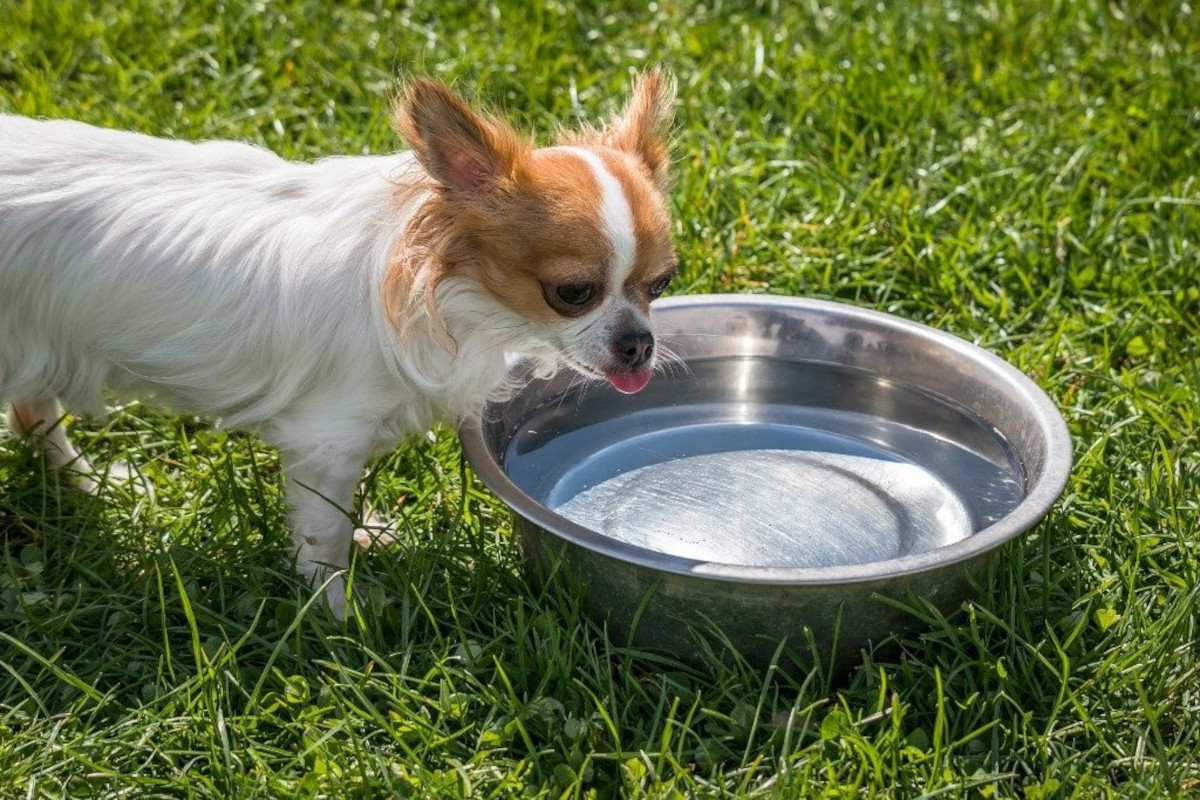
Your dog is drinking a lot of water? Here are the probable causes
December 18, 2018A healthy cat drinks up to 300ml of fresh water daily. This can increase if you only feed your cat dried food – food in cans or pouches contain 80% water. The amount of water drunk is also dependant on the size of your cat. And the time of year. Is your cat drinking a lot of water? See probable reasons and warning signs here…
Notice the Clues
If you’re unable to measure your cat’s water intake you can look for the three main indicators that your cat is drinking more than normal. These are:
- Drinking from unusual places such as ponds, taps, or the shower
- Drinking from their water bowl more frequently
- Emptying the water bowl and needing it re-filled more often
As long as your cat is happy and healthy excessive drinking could just be a sign of environmental changes like the weather, or simply a warm house.
Getting Enough Water
Cat dehydration is relatively simple to spot as there are certain signs including:
- Elasticity of the skin – if you pull back the skin at the scruff of the neck it should spring back when you release it
- Overly lethargic – if your cat isn’t acting physically normal this could be a symptom
- A dry, flaky coat – indicates not enough water is being consumed
Encourage Drinking
Cats need fresh water every day. You can also try to increase the amount of water drunk by:
- Swapping plastic bowls that can taste funny to ceramic or stainless steel
- Add wet food to the diet which contains more water
- Buy a pet water fountain that provides fresh water constantly and is fun
- Add ice cubes to water bowls
Drinking Too Much Water
There are three basic reasons for your cat drinking a lot of water suddenly. These are known as:
Compensatory – this could be due to extremely hot weather causing excess thirst. Or a change in diet from wet to dry food which makes your cat thirstier. If your cat has been vomiting and had diarrhoea excess water loss will be compensated for by normally functioning kidneys. And your cat will drink more.
Pathological – these conditions cause ongoing excess water loss and make your cat drink more. They include:
- Kidney disease: when the kidneys can’t properly regulate fluid balance and excessive water is urinated away
- Liver disease: when essential functions such as filtering toxins and storing nutrients aren’t working properly
- Diabetes: high levels of glucose in the blood overflows into the urine taking away large volumes of water
- Hormonal and endocrine diseases: where the kidneys aren’t stimulated so fluids can’t be reabsorbed from them
- Hyperthermia: an increase in body temperature caused by a range of disorders
- Urinary tract infection: including cystitis, urinary stones, and blood in the urine
- Hypotension: low blood pressure can be caused by severe dehydration
Behavioural – when you notice your old cat drinking a lot of water this can be related to hyperthyroidism and can cause increased thirst
When to Get Professional Help
There are other signs that will indicate that your cat is unwell. They Include:
- An increase or decrease in appetite
- More frequent urination and often accidents in the home
- Sleeping more than usual
- Behavioural changes including hyperactivity or constant meowing
- Sickness and diarrhoea
You’ll need to make an appointment with your vet for a thorough check-up and assessment of the symptoms.
What Your Vet Will Do
Early detection and swift treatment will greatly improve recovery. Your vet will need to run blood and urine tests to evaluate kidney function. And to check for diabetes, hyperthyroidism and liver disease. You can eliminate infections and anaemia by a complete blood count. Radiographs and ultrasounds will also be conducted.
Diabetes is a life-threatening disease and treatment needs to start immediately. Maintenance therapy is usually daily insulin injections alongside a high protein and low carb diet.
Kidney disease may include surgery to remove the failing kidney, a transplant, or medication to slow the progression of the disease, if untreatable.
If liver disease is the cause your cat will have probably have to go to the animal hospital for medication of electrolytes, vitamins, and thiamine. There, they can treat the disease accordingly.
The vet will administer intravenous fluids to treat dehydration and they my also prescribe diuretics to reduce any calcium levels in the urine. If the vet diagnoses hyperthyroidism, your pet may need to have radiotherapy or surgery. But this does have potential risk and side-effects.
When There’s No Other Choice
When putting a cat to sleep is a final option you need to get in touch with dedicated at-home end-of-life vets. You’ll get all the advice and support you need at this traumatic time. And you’ll get peace of mind knowing that your has no more unnecessary suffering. Gentle at-home euthanasia will provide a peaceful end for your feline friend.

